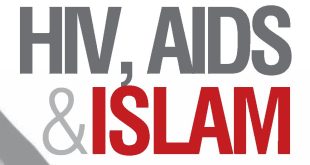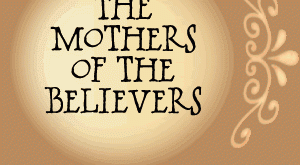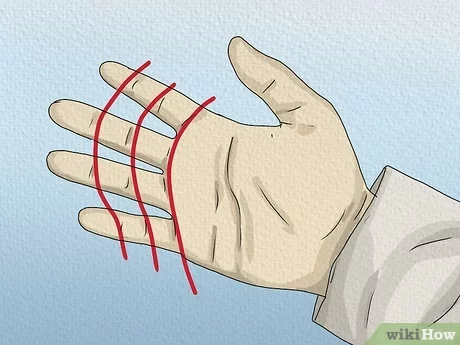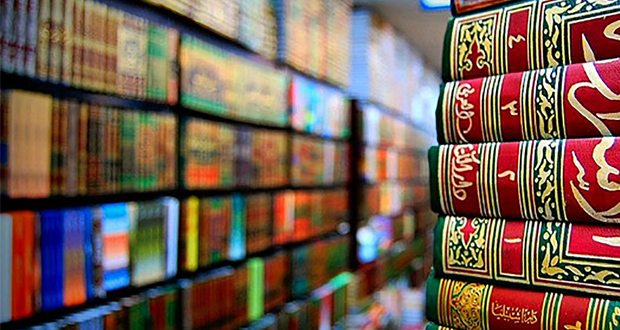 The vast and beautiful region of Central Asia comprising the largely unknown Muslim states of Uzbekistan, Azerbaijan, Tajikistan, Kyrgyzstan, Kazakhstan and Turkmenistanis probably the most obscure area of the world.
The vast and beautiful region of Central Asia comprising the largely unknown Muslim states of Uzbekistan, Azerbaijan, Tajikistan, Kyrgyzstan, Kazakhstan and Turkmenistanis probably the most obscure area of the world.
Ancient cities of Uzbekistan were located on the ancient Silk Road, the trading route between China and the West. The route took its name from silk, the commodity most in demand in Europe from China during the Roman period. Some of the most influential and savage conquerors came and ruled these lands. Alexander the Great set up at least 8 cities in Central Asia between 334 – 323 BC before the caravans began traveling through the Silk Road after around 138 BC when China opened its border to trade. Between 484 – 1150 Huns, Turks and Arabs came from the west.The Arabs introduced Islam to the region. Many mosques and Madrassahs were
built in Uzbekistan cities of Samarkand, Bukhara and Khiva, including remaining structures of the Samanids, during this period.
Theywere seats of nomadic empires and settled kingdoms in the past, as well as being centers in the development of Islam throughout the region. For centuries the hundreds of madrasahs, or Islamic colleges in Bukhara and Samarkand attracted students from as far away as Morocco and Indonesia.
 |
| Map of Central Asia |
During the past century, Central Asia was ruled first by the Tsars of Russia, followed by the Soviet Union until its collapse. The overall strategy of the Soviet Union has been to keep the entire Central Asia undeveloped and away from world attention.
As a result, the world knows little about this region, its people and their problems despite their vast untapped resources and ancient history and culture. The people in Central Asia who remained ignorant of the changes in the rest of the world are now beginning to realize that there is another world away from their mountainous regions as they begin to journey around with travel restrictions being eased.
After the 1917 Bolshevik revolution, Soviets began their skillfully orchestrated campaign to keep the world that was already not much interested in this region, consistently in the dark. Simultaneously they introduced numerous measures including banning all religious activities and destroyingmore than 14,000 mosques all over.
In the post-Soviet era, all East European countries such as Poland, Hungary, Belarus, Romania, Bulgaria and Czechoslovakia were free to decide their destiny while East Germany was united with West Germany. In turn, they quickly started dismantling their state controlled economies and opted for free market economies which brought them closer to the US and Europe. With lightning speed some of these countries were also admitted to NATO – North Atlantic Treaty Organization.
 However Central Asian Republics were not given the same generous treatment by Russia,US and Europe.All Central Asian republics were quickly brought under Russia’s wing through an umbrella organization called the Commonwealth of Central Asian States, CIS and were allowed to reel under oppressive and ruthless former Communist regimes.
However Central Asian Republics were not given the same generous treatment by Russia,US and Europe.All Central Asian republics were quickly brought under Russia’s wing through an umbrella organization called the Commonwealth of Central Asian States, CIS and were allowed to reel under oppressive and ruthless former Communist regimes.
Therefore, the disintegration of the Soviet Union did not bring any significant economic or political relief to the people in Central Asia. Instead, worse-than-Soviet-era type of oppression continued while economic conditions began to deteriorate in all these states.
Soviets also used many Central Asian republics as dumping grounds for nuclear waste. The legacy is such that even today there are radioactive waste dumps scattered across the region and in Kyrgyzstan alone, several contaminated local villages threaten an environmental catastrophe. Added to this were numerous abandoned Soviet biological weapons laboratories in Kazakhstan.
Economic problems
The people didn’t suffer from poverty under the Soviets’ state controlled economy. However since its collapse the situation changed overnight and the centuries-old agony of the people in the region continues despite sweeping global political and economic changes. When the Soviet Union collapsed, it also left behind a painful legacy of economic breakdown and the devastating social consequences for all these republics.
Unfortunately, the region’s governments accused of widespread corruption and oppression, have done little or nothing to rebuild their economies and improve the people’s living standards.
As a result, unemployment and poverty are rampant in all these republics where factories remain closed and malnutrition is rife with serious social problems destabilizing the entire region. The question of economic survival has forced people to take to drug smuggling, which is today a massive problem in the region as it accounts for almost ninety percent of heroin reaching Europe. According to some reports, the money involved in the drug trade is almost equal to, or exceeds, the annual budget in some states.
Adding fuel to fire their democratic credentials were marred by flawed parliamentary and presidential elections while opposition leaders were harassed, imprisoned, tortured and even killed and opposition newspapers were closed in all these republics. As a result there has been widespread unrest and clashes with security forces as protestors demand democratic reforms, economic relief, political and religious freedom. These genuine grievances and demands were brutally suppressed in most of these republics known for their repressive governance.
The general feeling is that these human rights violations were done with the tacit blessings of the US and European governments. The US sends hundreds of thousands of dollars in military assistance and aid annually, according to Human Rights Watch. However this aid failed to reach the masses.
 |
 |
| A mosque in Tashkent-Uzbekistan | Traditional Central Asian market scene |
Political oppression and economic decline are common features in many Central Asian Republics.The people rose up demanding political and religious freedom and economic benefits in the post-Soviet era. But these uprisings were characterized as a struggle between “Islamists” and “secularists and the governments were given the license by Moscow and the West to crackdown on all such unrest.
For example, Tajikistan, the poorest of the former Soviet states, plunged into civil war immediately after independence in 1991 and, in the subsequent five-year destructive civil war between the Moscow-backed Communist government and the opposition, more than 50,000 people were killed and over one-tenth of the population fled the country.
Though the fighting ended in 1997 under a United Nations-brokered peace agreement, Tajikistan, which allowed Russian military presence under the guise of guarding its border with Afghanistan, today relies heavily on Russian assistance due to security and dire economic reasons making its newly-won independence meaningless.
Kazakhstan
Kazakhstan is yet another tragedy under Nursultan Nazarbayev, who opened his airspace to George Bush’s “anti-terrorist coalition”. There were number of reports of Nursultan being bribed by the US with various incentives in the hope of wresting it from the Russian orbit. Nursultan was known to have also been bribed by many leading American oil companies which started rushing into Central Asia to plunder that region’s wealth.
Unlike other states Kazakhstan which covers vast territory, is blessed with massive natural resources thus attracting considerable foreign investment especially in the Caspian oil sector which in turn has brought about rapid economic growth.
One oil pipeline links Western Kazakhstan with the Russian Black Sea port of Novorossiysk and another pipeline to China. But the benefits of this economic growth have not reached the people who suffer due to widespread poverty and unemployment while the rich have become richer since independence due to privatization and various deals.
Besides poverty the people also have to live with the catastrophic impact of the Soviet-era, nuclear testing and toxic wastes. Added to this misery has been the increasing level of drug addiction and a growing incidence of HIV/AIDS. Inefficient irrigation projects have led to severe shrinkage of the heavily polluted Aral Sea.
Kyrgyzstan
A Central Asian country of extraordinary natural beauty with its towering peaks and proud nomadic traditions, Kyrgyzstan was annexed by Russia in 1864. It achieved independence following the collapse of the Soviet Union in 1991. While Kyrgyzstan does possess oil and gas resources, it continues to import the vast bulk of what it needs. The economic situation remains dismal, particularly in the south of the country where unemployment is very high and poverty widespread.
 In the wake of 9/11, the Kyrgyz leadership agreed to allow US forces to use Bishkek’s Manas airport as a base. The base was used as a staging ground for the US-Allied invasion of Afghanistan. In September 2003, agreement was also reached with Moscow allowing Russian rapid reaction forces to deploy at the Kant airbase in the campaign against terrorism. The Russian forces are stationed just 30 km from their US counterparts.
In the wake of 9/11, the Kyrgyz leadership agreed to allow US forces to use Bishkek’s Manas airport as a base. The base was used as a staging ground for the US-Allied invasion of Afghanistan. In September 2003, agreement was also reached with Moscow allowing Russian rapid reaction forces to deploy at the Kant airbase in the campaign against terrorism. The Russian forces are stationed just 30 km from their US counterparts.
During the early 1990s, Kyrgyzstan’s democratic credentials were regarded as relatively robust. This reputation was subsequently lost as corruption and nepotism crept in during President Askar Akayev’s years in office. Parliamentary and presidential elections were rigged; opposition figures faced harassment and imprisonment while opposition newspapers were closed.
In 2005, a popular revolt, sparked by widespread allegations of government interference in parliamentary elections and fuelled by poverty and corruption, swept President Askar Akayev, from power. He had led the country since independence. Subsequent presidential elections in July 2005 were won overwhelmingly by the former prime minister and acting president Kurmanbek Bakiyev. By then his predecessor Akayev had fled to Russia.
Bakiev’s landslide victory came in the wake of election pledges to root out corruption and nepotism and fight poverty. Foreign observers said the poll showed clear progress in democratic standards.
Here too, one of the biggest problems faced by Kyrgyzstan is its inability to deal with the radioactive materials dumped by Moscow during the time of the former Soviet Union as the centralized control of these dangerous materials too collapsed. People are killed or suffer due to the availability of large sources of radiation materials.
Turkmenistan
Turkmenistan is made up mainly of desert and has the smallest population of the former Soviet republics in Central Asia. It possesses the world’s fifth largest reserves of natural gas, and has substantial deposits of oil. Yet it is still impoverished, and since independence from the Soviet Union in 1991, has remained largely closed to the outside world. It is effectively a one-party state.There is no evidence of an independent media.
Oppressed people throughout these republics want to oust these dictators now aligned with both Russia and the US, and to set up their own democratic states and take measures to improve their economic and social conditions.
and take measures to improve their economic and social conditions.
During the past few years almost all global players from US, Europe and Russia to India and china try to enterCentral Asian Republics to establish better ties and explore economic and other cooperation. While Russia has been the traditional and longstanding player,US and Europe already entered the scene. Early this month Indian External Affairs Minister .SM Krishna paid a two-day visit to Tajikistan and held extensive discussions with his counterpart Hamrokhom Zarifi about bilateral cooperation on several issues aimed at further cementing bilateral ties.
A recent report by Myles G Smith pointed out that “New players are challenging Russia’s traditional position as the conflict referee and patron of first preference in Central Asia. All the others are, arguably, ‘emerging powers’, to reuse an overused phrase. China is returning to prominence after a long hiatus. Two decades of American power in the region has paid some dividends, for a high price of investment. Turkey’s economic influence has risen, though its political influence has not kept pace. Arab and Iranian regimes seemed poised to become new players as well. But the events of last few years: the ongoing financial crisis, rising violence in Afghanistan, the Arab Spring, among others, will inevitably reorder the priorities of external powers, and their policies towards the region.
Post Disclaimer | Support Us
Support Us
The sailanmuslim.com web site entirely supported by individual donors and well wishers. If you regularly visit this site and wish to show your appreciation, or if you wish to see further development of sailanmuslim.com, please donate us
IMPORTANT : All content hosted on sailanmuslim.com is solely for non-commercial purposes and with the permission of original copyright holders. Any other use of the hosted content, such as for financial gain, requires express approval from the copyright owners.
 Sri lanka Muslims Web Portal Sri Lanka Muslims News Center
Sri lanka Muslims Web Portal Sri Lanka Muslims News Center



